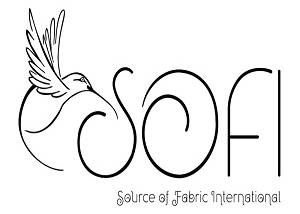Fabric dyeing has a rich history that spans thousands of years, evolving from rudimentary methods to sophisticated techniques. Understanding this evolution offers a deeper appreciation for the art and science behind the vibrant textiles we enjoy today. In this article, we’ll delve into the history of fabric dyeing, from its ancient origins to the modern innovations that continue to shape the industry.
Ancient Beginnings of Fabric Dyeing
The history of fabric dyeing dates back to ancient civilizations. Early humans discovered that natural substances like plants, minerals, and insects could produce colors. The first dyes were made from natural sources, such as indigo, madder, and cochineal.
1. Natural Dyes: Natural dyes were the cornerstone of ancient dyeing practices. Plant-based dyes, such as indigo from the Indigofera plant and red from madder roots, were widely used. These dyes were prized for their rich colors and durability.
2. Early Dyeing Techniques: Ancient civilizations developed various dyeing techniques to apply these natural dyes. The Egyptians, for example, were known for their skillful use of mordants—substances that fix dyes to fabric—enhancing color fastness and vibrancy.
The Middle Ages: Expanding the Palette
During the Middle Ages, fabric dyeing techniques became more refined, and the range of available colors expanded. The Silk Road facilitated the exchange of dyeing knowledge and materials between East and West.
3. Medieval Europe: In medieval Europe, guilds controlled the dyeing industry, ensuring high standards and quality. Dyers experimented with new dye sources, such as wood, which produced a blue dye similar to indigo.
4. The Role of Alchemy: Alchemy played a role in advancing dyeing techniques. Alchemists sought to transform base materials into precious ones, including the development of vibrant dyes. This period saw the introduction of exotic dyes from Asia and the Middle East.
The Renaissance: Art and Science Intersect
The Renaissance era marked a significant period of innovation in fabric dyeing. Art and science intersected, leading to more precise and consistent dyeing methods.
5. Synthetic Alizarin: One of the key innovations of the Renaissance was the synthesis of alizarin, the red dye derived from madder. This breakthrough allowed for more consistent and vibrant red hues, which were previously difficult to achieve with natural dyes alone.
6. Colorfastness Advances: The understanding of chemistry improved, leading to advancements in colorfastness. Dyers learned to use metal salts as mordants, ensuring that colors remained vibrant even after repeated washings. Read More About Exploring the Art of Fabric Dyeing: A Guide to Different Techniques and Styles
The Industrial Revolution: Mass Production and Synthetic Dyes
The Industrial Revolution transformed fabric dyeing from a craft to an industry. Innovations in chemistry and machinery allowed for mass production and the development of synthetic dyes.
7. Mauveine: In 1856, William Henry Perkin accidentally discovered mauveine, the first synthetic dye, while attempting to synthesize quinine. This discovery revolutionized the dyeing industry, offering a cheaper and more vibrant alternative to natural dyes.
8. Aniline Dyes: The success of mauveine led to the development of other aniline dyes. These dyes, derived from coal tar, provided a wide range of colors and became the foundation of the modern dyeing industry.
Modern Innovations: Sustainability and Technology
Today, fabric dyeing continues to evolve with a focus on sustainability and technological advancements. The industry is shifting towards eco-friendly practices and digital innovations.
9. Eco-Friendly Dyes: Modern consumers demand sustainable products, leading to the development of eco-friendly dyes. These dyes are derived from natural sources and produced with minimal environmental impact.
10. Digital Fabric Printing: Digital fabric printing is a significant innovation, allowing for precise and customizable designs. This technology reduces waste and offers endless creative possibilities, revolutionizing the way fabrics are dyed and printed.
Conclusion
The history of fabric dyeing is a testament to human ingenuity and creativity. From ancient natural dyes to modern synthetic and eco-friendly innovations, the journey of fabric dyeing reflects the evolving needs and values of society. By exploring the history of fabric dyeing, you gain a deeper understanding of the techniques and innovations that have shaped this essential craft. At SOFI, we are committed to supporting your creative endeavors with our professional fabric dyeing services, ensuring that your projects are both beautiful and sustainable.


